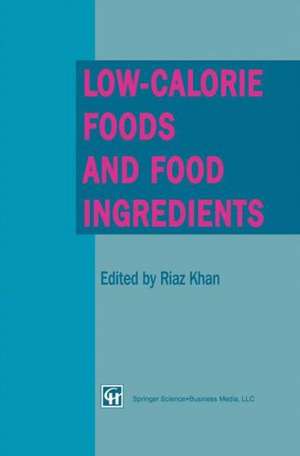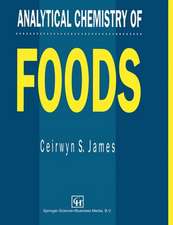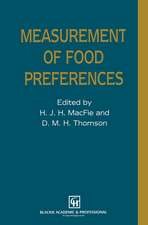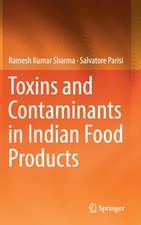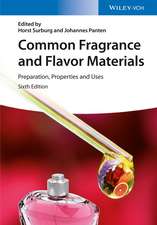Low-Calorie Foods and Food Ingredients
Autor R. Khanen Limba Engleză Paperback – 24 oct 2012
| Toate formatele și edițiile | Preț | Express |
|---|---|---|
| Paperback (1) | 635.80 lei 43-57 zile | |
| Springer Us – 24 oct 2012 | 635.80 lei 43-57 zile | |
| Hardback (1) | 644.18 lei 43-57 zile | |
| Springer Us – 31 mar 1993 | 644.18 lei 43-57 zile |
Preț: 635.80 lei
Preț vechi: 748.00 lei
-15% Nou
Puncte Express: 954
Preț estimativ în valută:
121.70€ • 132.24$ • 102.29£
121.70€ • 132.24$ • 102.29£
Carte tipărită la comandă
Livrare economică 21 aprilie-05 mai
Preluare comenzi: 021 569.72.76
Specificații
ISBN-13: 9781461363620
ISBN-10: 1461363624
Pagini: 204
Ilustrații: XV, 183 p.
Dimensiuni: 155 x 235 x 11 mm
Greutate: 0.29 kg
Ediția:Softcover reprint of the original 1st ed. 1993
Editura: Springer Us
Colecția Springer
Locul publicării:New York, NY, United States
ISBN-10: 1461363624
Pagini: 204
Ilustrații: XV, 183 p.
Dimensiuni: 155 x 235 x 11 mm
Greutate: 0.29 kg
Ediția:Softcover reprint of the original 1st ed. 1993
Editura: Springer Us
Colecția Springer
Locul publicării:New York, NY, United States
Public țintă
ResearchCuprins
1 Low-calorie foods: relevance for body weight control.- 1.1 Overconsumption and low-calorie foods.- 1.2 Appetite and the regulation of body weight.- 1.3 Appetite control and the satiety cascade.- 1.4 Nutrition and satiety.- 1.5 Relationship between body weight and use of carbohydrate or high-intensity sweeteners.- 1.6 Dietary fat and appetite control.- 1.7 Low-calorie products — physiological responses.- 1.8 Low-calorie products — psychological responses.- 1.9 Summary.- References.- 2 Regulatory aspects of low-calorie food.- 2.1 Introduction.- 2.2 Regulatory bodies.- 2.3 Controls on the components of low-calorie foods.- 2.4 Controls on the composition of low-calorie foods.- 2.5 Novel foods.- 2.6 Labelling of low-calorie foods.- 2.7 Conclusion.- References.- 3 Low-calorie bulk sweeteners: nutrition and metabolism.- 3.1 Introduction.- 3.2 Sugar alcohols.- 3.3 Physicochemical and functional properties of sugar alcohols.- 3.4 Fructo-oligosaccharides.- 3.5 Nutritional properties.- 3.6 Conclusions.- References.- 4 Low-calorie bulking ingredients: nutrition and metabolism.- 4.1 Introduction.- 4.2 Dietary fibres.- 4.3 Low-calorie polysaccharides.- 4.4 Nutrition and metabolism.- 4.5 Conclusions.- References.- 5 Fat replacer ingredients and the markets for fat-reduced foods.- 5.1 Introduction.- 5.2 Some issues surrounding fat substitution.- 5.3 Fat substitutes and replacers.- 5.4 Markets for fat-reduced foods and fat replacer ingredients.- 5.5 Conclusions.- References.- 6 Fat and calorie-modified bakery products.- 6.1 Introduction.- 6.2 Marketing overview.- 6.3 Technical overview.- 6.4 Conclusion.- References.- 7 High-intensity, low-calorie sweeteners.- 7.1 Introduction.- 7.2 Approved artificial sweeteners.- 7.3 High-intensity sweeteners under development.- 7.4 Conclusions.-Acknowledgement.- References.- 8 Low-calorie soft drinks.- 8.1 Introduction.- 8.2 Market and technical needs.- 8.3 Formulation of low-calorie soft drinks.- 8.4 Commercial artificial sweeteners.- 8.5 Conclusion.- References.
